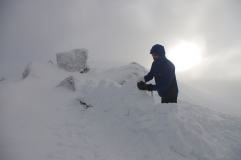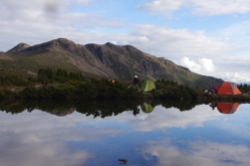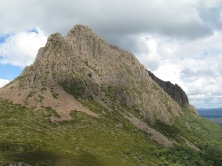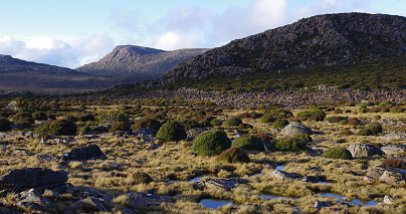On a recent walking trip in Central Tasmania, I drove past an old lodge near Lake Augusta that was being renovated. My immediate reaction was that if someone was throwing lots of money at a restoration of a large building located almost at the end of the road in a remote area, that they must have plans for something big.
This opinion piece by Nicholas Sawyer in The Mercury seems to re inforce that suspicion.
Here comes the choppers
WITH election pork-barrelling starting to ramp up, an alarming trend is already apparent — pre-emptive funding of tourism projects in national parks prior to serious consideration of their merits in a bid to make their approval almost a foregone conclusion.
The reallocation of the Cadbury millions kickstarts two controversial projects.
The derelict Bernacchi Lodge (the former Antarctic Division training facility) on the Central Plateau and in the Tasmanian Wilderness World Heritage Area is to be renovated to become “premium accommodation”.
Premium accommodation at this location can mean only one thing, an up-market fishing lodge. And what will be the main attraction? The obvious answer is helicopter fly-fishing trips to the more remote lakes on the plateau when the weather permits.
What does the proposed new management plan for the TWWHA say? Up to five landing sites will be considered in the Self-Reliant Recreation Zone that contains most lakes of interest. What was one of the most controversial aspects of the review of the TWWHA management plan? Helicopter access to remote areas.
Another article describes the renovation:
AN abandoned lodge in the Central Highlands is being transformed into luxury accommodation by investors including former racing car driver Marcos Ambrose.
Bernacchi Lodge near Liawenee was built in 1980 to train Antarctic Division staff for expeditions but the building has been unused since 1999.
Yesterday, Mr Ambrose said he and the other four investors were spending $1.3 million to renovate and would rename it Thousand Lakes Lodge.
The lodge, at Lake Augusta, would have nine rooms and 13 bathrooms, as well as communal lounge areas with open fires.
As Mr Sawyer says in the article:
Our major national parks are under pressure from rapidly increasing tourist numbers. It is vital to maintain a quality visitor experience or Tasmania’s reputation will soon suffer. This will not be achieved by wasting scarce funding on ill-considered proposals, especially ones intended to get ever increasing numbers of visitors into a few iconic locations.
Surely it is obvious that opportunistic development proposals, in the absence of a shared strategic vision or a robust assessment process to keep them in check, have the potential to reduce our great national parks to mediocrity. This will damage not only the parks themselves but also Tasmania’s tourism industry.
























































Leave a comment